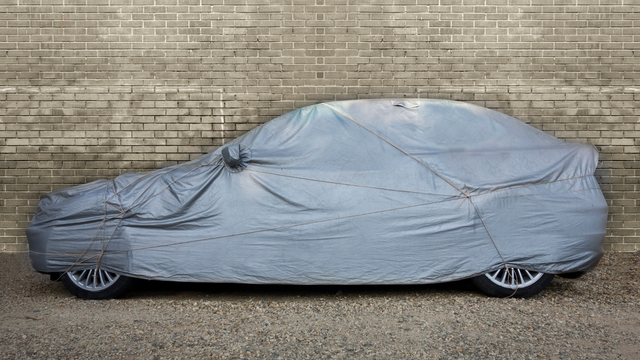Car tarps are a valuable investment for protecting your vehicle from the elements, but their effectiveness depends on how well they are secured. Improperly fastened tarps can lead to inadequate coverage, exposure to the elements, or even damage to your car’s surface. Whether you’re shielding your vehicle from rain, snow, UV rays, or dust, knowing how to secure a car tarp properly ensures maximum coverage and protection. This guide provides step-by-step instructions and helpful tips to keep your car tarp in place and performing optimally.

1. Choose the Right Tarp for Your Vehicle
Before securing a car tarp, it’s crucial to select one that fits your vehicle correctly. A tarp that is too small won’t provide complete coverage, while an oversized tarp can lead to loose areas that may flap in the wind and cause scratches.
Start by measuring your car’s dimensions, including length, width, and height. Many tarps are designed for specific vehicle types, such as sedans, SUVs, or trucks, so ensure you choose one tailored to your car’s size. Custom-fit tarps are ideal as they contour to the vehicle’s shape, minimizing gaps and maximizing protection.
Additionally, consider the material and design features. Look for tarps with built-in elastic hems, reinforced edges, and grommets for added securing options. Choosing the right tarp is the first step to ensuring it stays securely in place.
2. Prepare Your Vehicle for Tarp Placement
Proper preparation before placing the tarp can make securing it more effective. Begin by cleaning your car’s surface to remove dirt, dust, or debris. This step prevents scratches caused by trapped particles when the tarp is tightened or moved.
Ensure your car is dry before applying the tarp, as moisture trapped underneath can lead to mold, mildew, or rust. If your tarp includes a soft inner lining, double-check that it is clean to prevent damage to your car’s paint.
Finally, park your car on a flat, stable surface, ideally away from high winds or areas with sharp objects that could tear the tarp. By preparing your vehicle properly, you create a secure foundation for the tarp and reduce the risk of issues during its use.
3. Align and Drape the Tarp Correctly
Proper alignment and draping of the tarp are essential for achieving full coverage and minimizing exposure to the elements. Begin by unfolding the tarp and locating its front and rear ends—many tarps are labeled to make this easier.
Place the front of the tarp over the hood of your car and gently drape it over the top, working your way toward the rear. Ensure that the tarp covers the entire vehicle, including the sides, bumpers, and tires. Smooth out any wrinkles or folds as you go to create a snug fit.
If you’re using a custom-fit tarp, alignment will be more intuitive, as the contours are designed to match your car’s shape. For universal tarps, take extra care to center the tarp evenly to avoid overhangs or gaps that could expose parts of your vehicle to damage.
4. Secure the Tarp Using Built-In Features
Most car tarps include built-in features that make securing them straightforward and reliable. Elastic hems provide a snug fit around the edges of your car, while straps or buckle systems can be used to fasten the tarp more securely.
Start by attaching any built-in straps or clips to designated anchor points, such as the wheel wells or undercarriage of your vehicle. These fasteners keep the tarp in place even in windy conditions. For tarps with grommets, you can use bungee cords or ropes to tie the tarp securely to fixed points on the car or ground.
If your tarp has a drawstring closure, pull it tight and knot it securely to prevent the tarp from shifting. Always check that the securing features are evenly distributed to avoid pulling the tarp too tightly in one area, which could cause it to tear.
5. Add Extra Security for Harsh Weather Conditions
In regions prone to strong winds, heavy rain, or snow, additional measures may be needed to ensure your tarp stays in place. Reinforce the tarp by using extra bungee cords, straps, or weights.
If your car is parked outdoors, consider using ground anchors or sandbags to hold the tarp down securely. Ground anchors can be threaded through grommets or loops, providing additional stability. For tarps without these features, adding DIY weights like bricks or heavy-duty clamps can help keep the edges from lifting during storms.
In particularly windy conditions, check the tarp periodically to ensure it remains secure and hasn’t shifted or loosened. By taking these extra precautions, you can protect your car and tarp from damage caused by extreme weather.
Conclusion: Secure Your Tarp for Reliable Protection
Securing a car tarp properly is essential for maximizing its protective capabilities and ensuring your vehicle remains safe from environmental hazards. By choosing the right tarp, preparing your car, aligning it correctly, and using built-in and extra securing methods, you can achieve full coverage and peace of mind.
Investing a little time in properly securing your tarp not only extends its lifespan but also ensures your car stays shielded from the elements, no matter the conditions. Follow these steps, and your vehicle will remain in top condition, ready for whatever nature throws its way.